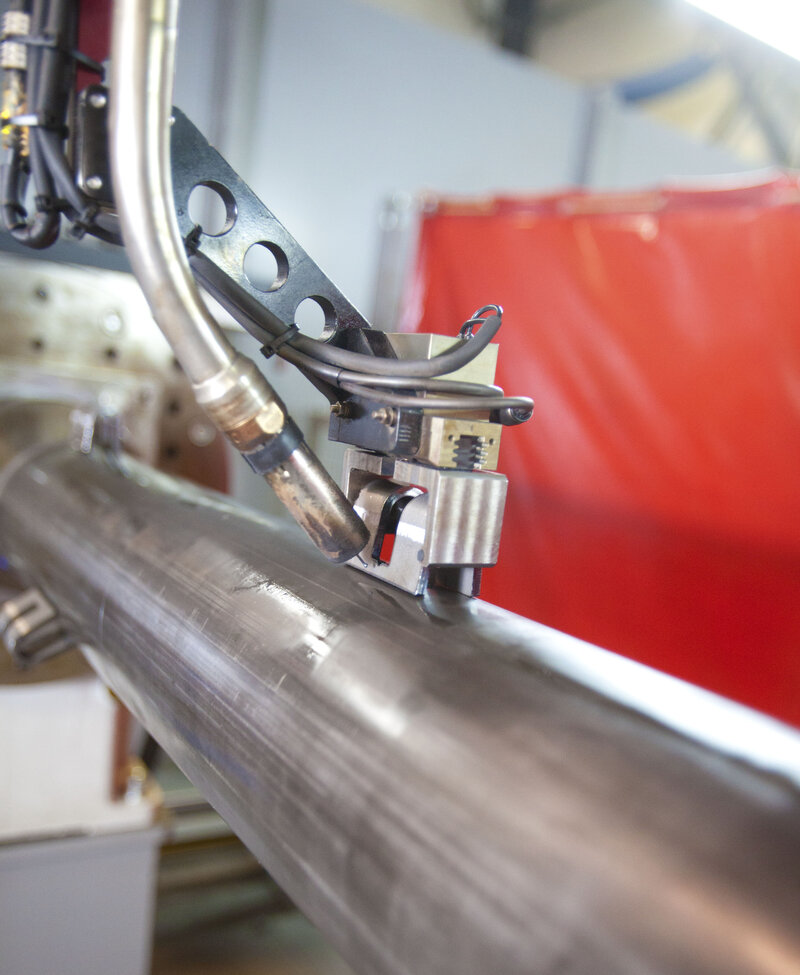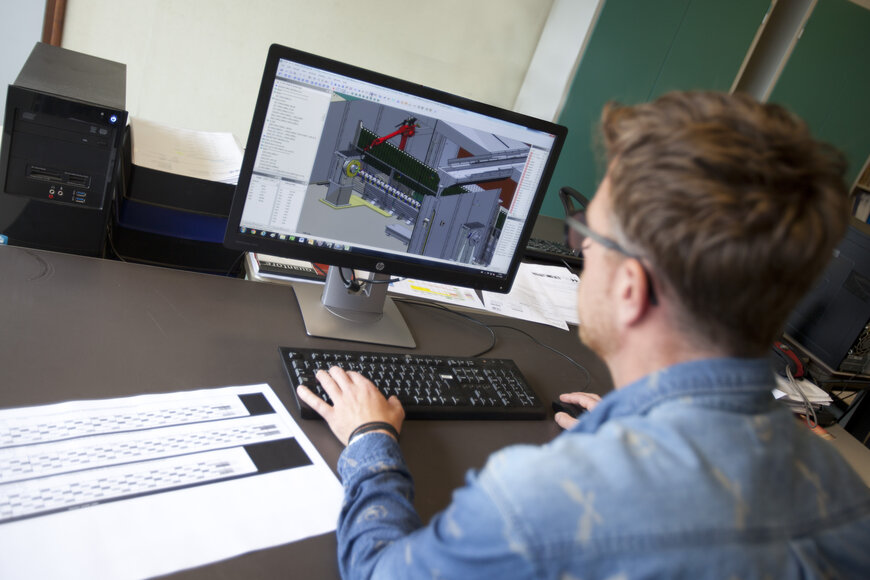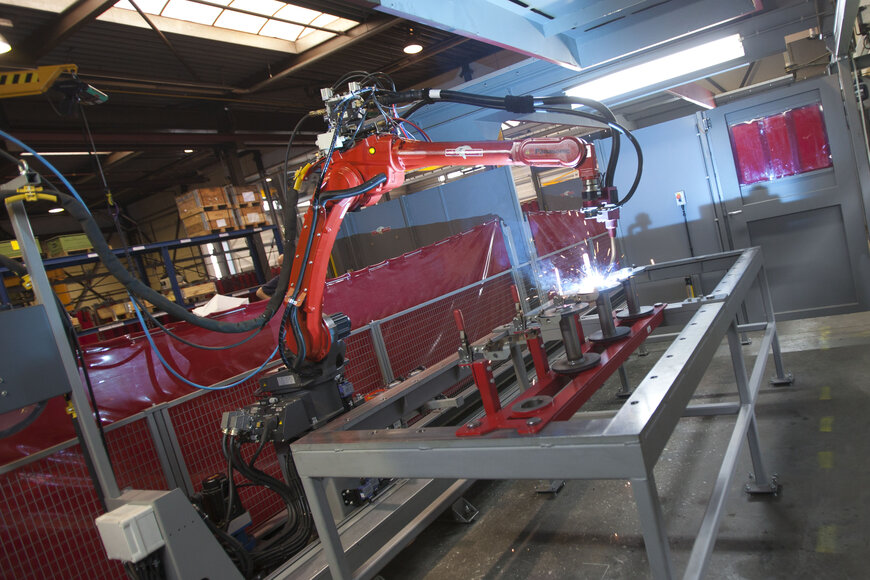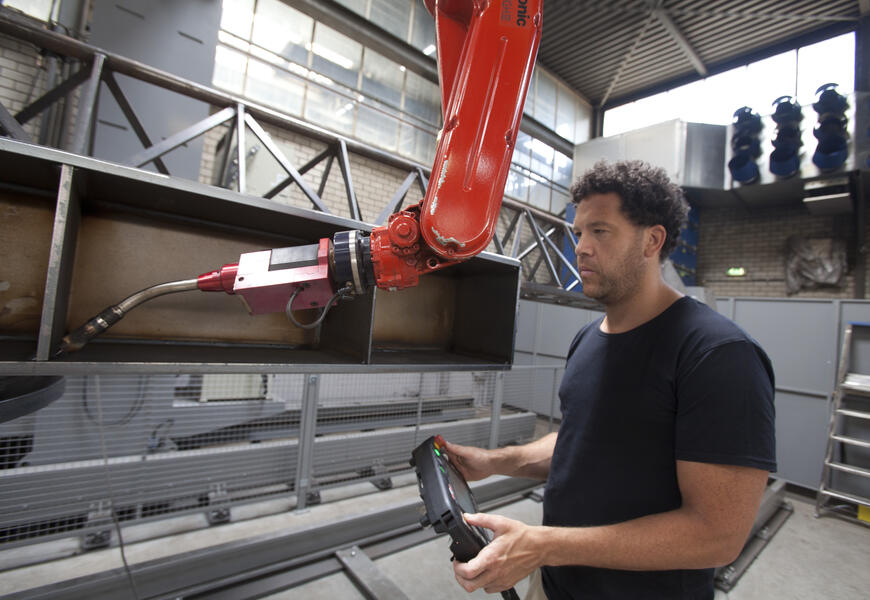Sertifioitu hitsaus
Korte Friesland on osoittanut ISO 3834-2 -laatusertifikaatillaan pystyvänsä täyttämään tiukimmatkin hitsausvaatimukset. "Kokeneet hitsaajamme ottavat mielellään vastaan vaativia tilauksia. Sisäinen koulutussuunnitelma ja hitsaajiemme sertifiointi takaavat tasaisen korkean hitsauslaadun," kertoo tuotantopäällikkö Samuel Oberman. Oberman on kansainvälinen hitsausasiantuntija (IWS) ja vastaa sekä hitsausprosessista että laadunvarmistuksesta. "Kaikki hitsaajat ja materiaalit ovat sertifioituja ja rekisteröity valmistusdokumentaatioon. Tämä mahdollistaa sen, että voimme jäljittää, kuka on tehnyt minkäkin hitsin. Seuraava askel on myös hitsausrobotin sertifiointi. Asetusten ja olosuhteiden rekisteröinti mahdollistaa hitsauslaadun ennustamisen. Kun saamme tämän datan oikeassa muodossa, voimme houkutella uusia asiakkaita," selittää Oberman.
Monipuolisesti hyödynnettävä hitsausrobottijärjestelmä
Vaikka hitsausrobottijärjestelmää käytetään tällä hetkellä pääasiassa roottorien valmistukseen, se soveltuu laajasti erilaisiin tuotteisiin jopa 9 metrin pituuteen asti. Tätä varten Korte Friesland on kehittänyt oman siirrettävän hitsaushuurujen poistojärjestelmän ja kiinteän suojaseinän. Kiskoilla liikkuva Panasonic TL-2000WG3 palvelee nyt kahta erillistä 4 metrin kiinnitintukea. "Keskiosan poistaminen ja asemointilaitteiden siirtäminen mahdollistaa pidempien komponenttien hitsaamisen. Meillä on myös kaksi kiinnitintukea pienille tuotteille laitteen takana. Tämä tekee järjestelmästä erittäin joustavan, ja se sopii täydellisesti metallintyöstökonekantamme rinnalle," sanoo Samuel Oberman.





